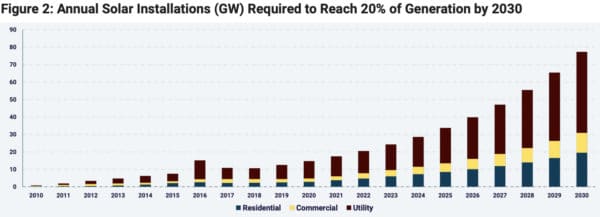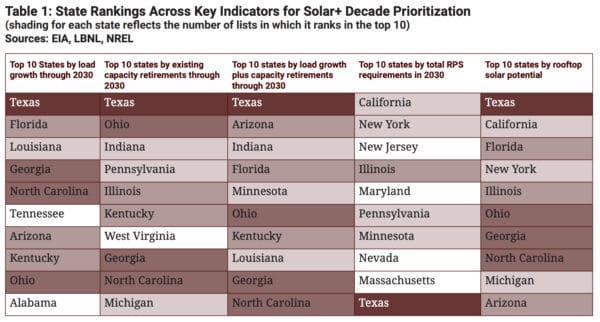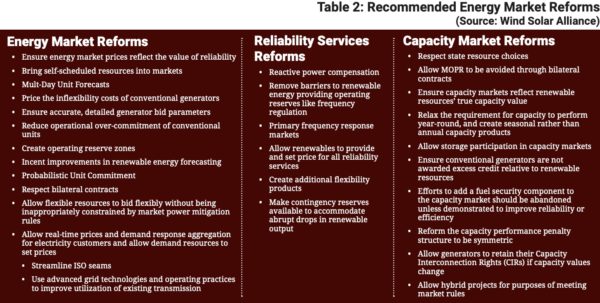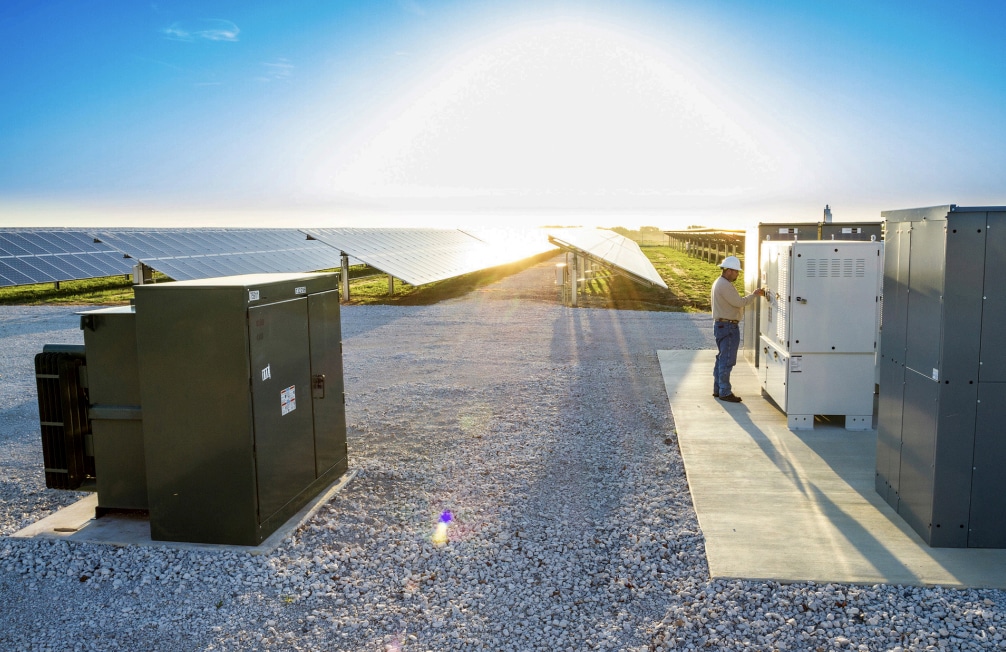The Solar Energy Industries Association (SEIA) has released a strategy roadmap to increase solar installations by 18% each year through 2030.
The goal is “ambitious but achievable,” says SEIA, and would lead to nearly 80 GW of solar installed in the plan’s final year of 2030—at which time solar would provide 20% of electricity generation:

Ambitious elements of the plan include federal policy goals, an embrace of electric vehicles, and ultimately a 50-state strategy.
The plan announces that SEIA will pursue “aggressive collaboration,” and discusses 16 strategies. The plan is chock-full of detailed strategy elements, of which a few are highlighted here.
Collaboration
The plan calls for “an unparalleled level” of cooperation within the solar industry, plus collaboration with the wind and storage industries; climate advocates; corporate and institutional buyers; and new allies, including conservative partners and rural economic development organizations.
Market accelerators
SEIA aims to expand the investment tax credit for storage; and achieve utility integrated resource plans that incorporate solar + storage. The plan also talks of “widespread electrification, particularly in the transportation sector.”
Market levers and policy drivers
SEIA aims to drive down non-hardware “soft costs,” for example by promoting the Solar Automated Permit Processing platform now under development; and promote solar-friendly building codes.
The “finance and tax” strategy includes extending the solar investment tax credit.
The state strategy aims to work in all 50 states in the long term, once the strategy is fully funded. In the near term, priority states are indicated here:

The most extensive strategy set is that for energy market reforms, comprising dozens of elements:

Managing growth
In the final strategy area, managing growth, SEIA aims to:
- Advance distributed solar, through measures such as integrated distribution planning and hosting capacity analysis
- Expand transmission, and improve interconnection processes
- Promote trade policies that target the entire U.S. solar manufacturing supply chain
- Advance U.S. solar manufacturing through non-trade policies
- Take a larger role in cybersecurity and resiliency proceedings
- Work to protect consumers
- Build a workforce “that better reflects our country”
- Develop best practices for land use and engage with communities to support solar expansion
- Advance refurbishment of solar modules for secondary use, and module recycling.
Ambition, and climate goals
SEIA’s roadmap says that the goal of 20% solar generation by 2030 was set by SEIA, and endorsed by the group of 100 industry leaders convened by SEIA as “ambitious but achievable.“
The plan notes that global climate goals are “an increasing priority for many voters,” and asserts that “According to the Intergovernmental Panel on Climate Change (IPCC), in order to limit the planet to 2 degrees Celsius of warming above pre-industrial levels, we must globally reach 50% emissions reductions by 2038.”
Limiting global warming to 1.5 degrees Celsius to reduce climate risk—the topic of an IPCC report last year—would require a faster pace of emission reductions.
SEIA’s plan adds that “To see global reductions by 50%, a much broader coalition will need to work together to create an economy-wide solution, of which solar will be a critical piece.”
The touchstone for ambitious solar growth plans remains the 30% annual growth target for PV installations globally through 2030, envisioned by 45 global industry leaders and scientists in a paper published in the journal Science.
SEIA and industry leaders might prefer to pursue all strategies more quickly, to achieve more rapid industry growth, yet the current size of the industry may not translate into the budget needed to do everything at once.
This content is protected by copyright and may not be reused. If you want to cooperate with us and would like to reuse some of our content, please contact: editors@pv-magazine.com.








By submitting this form you agree to pv magazine using your data for the purposes of publishing your comment.
Your personal data will only be disclosed or otherwise transmitted to third parties for the purposes of spam filtering or if this is necessary for technical maintenance of the website. Any other transfer to third parties will not take place unless this is justified on the basis of applicable data protection regulations or if pv magazine is legally obliged to do so.
You may revoke this consent at any time with effect for the future, in which case your personal data will be deleted immediately. Otherwise, your data will be deleted if pv magazine has processed your request or the purpose of data storage is fulfilled.
Further information on data privacy can be found in our Data Protection Policy.